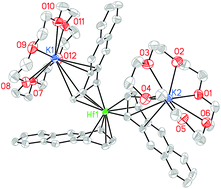The Chatt reaction: conventional routes to homoleptic arenemetalates of d-block elements
Abstract
Joseph Chatt was the first to discover in the early 1960s that previously unknown transition metal compounds were accessible and isolable via the reactions of alkali metal arene radical anions with transition metal precursors containing good leaving groups, such as weakly basic neutral or anionic ligands, especially halides. Later Peter Timms confirmed the importance of these early studies with the synthesis of several new bis(arene)metal(0) sandwich compounds by a variant of Chatt's route. Following a brief historical survey of alkali metal arene compounds, first examined in some detail by Wilhelm Schlenk, use of these reagents in the conventional syntheses of anionic homoleptic arene metal complexes of the d-block elements will be described. In several cases these species are quite useful because they function as storable “naked” atomic metal anion reagents, especially in their reactions with carbon monoxide and isocyanides. In view of Chatt's seminal contributions to an often unique route to organometallic and inorganic compounds, it is proposed that this valuable synthetic method be named the “Chatt reaction” in honor of a giant of chemistry.

- This article is part of the themed collections: Challenges in organometallic & coordination chemistry: in celebration of Geoff Cloke’s 65th birthday, The central role of the d-block metals in the periodic table and 2019 Frontier and Perspective articles


 Please wait while we load your content...
Please wait while we load your content...